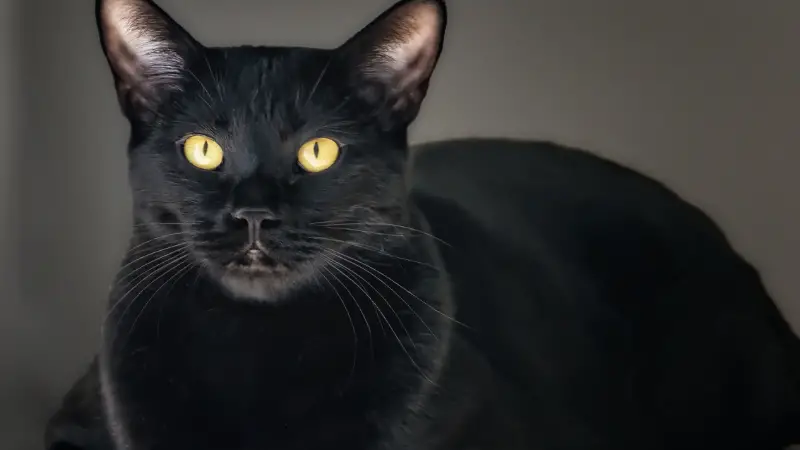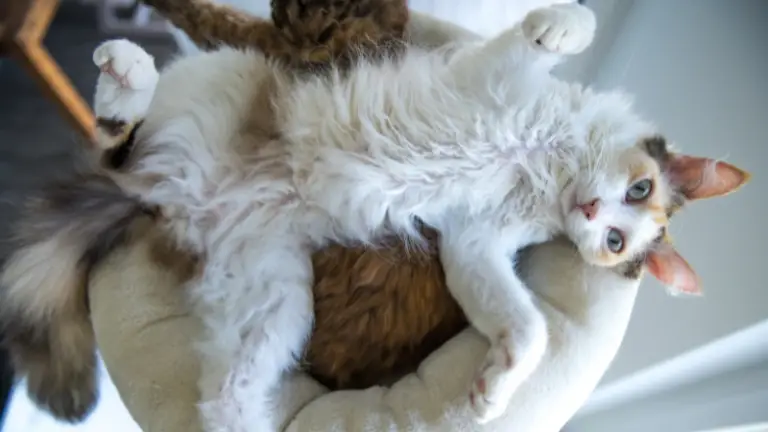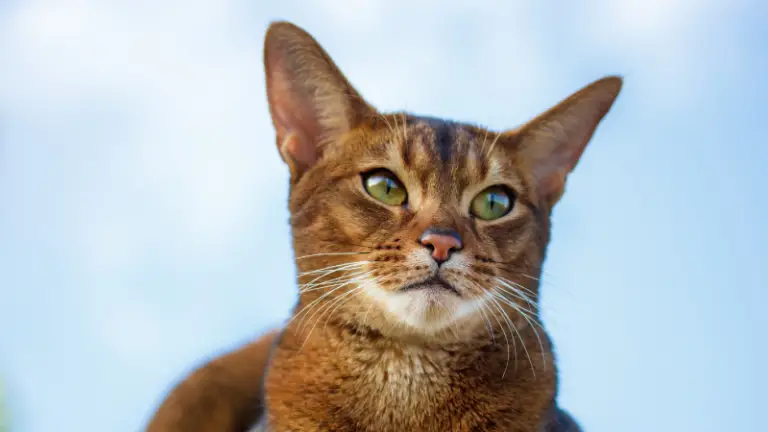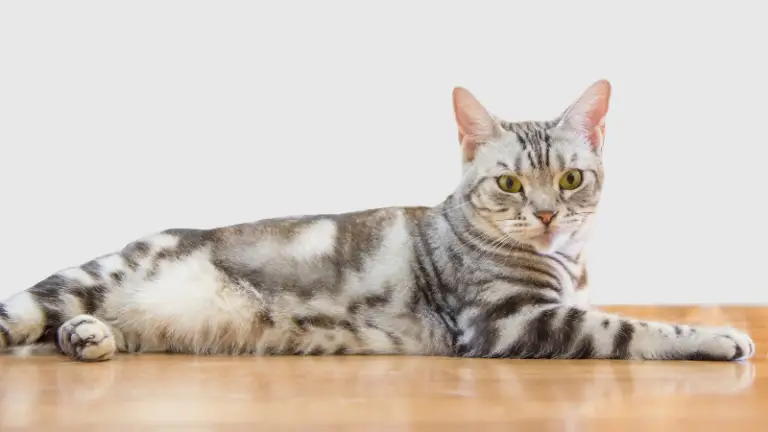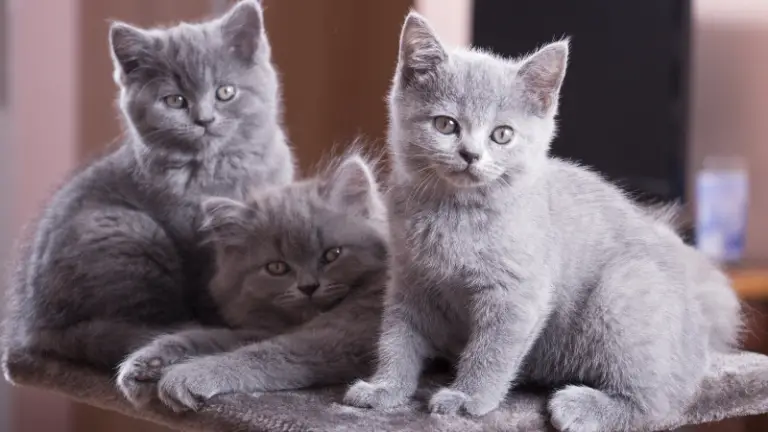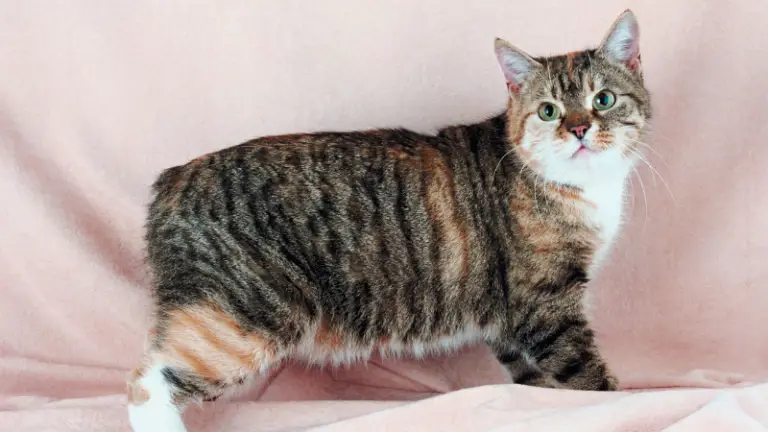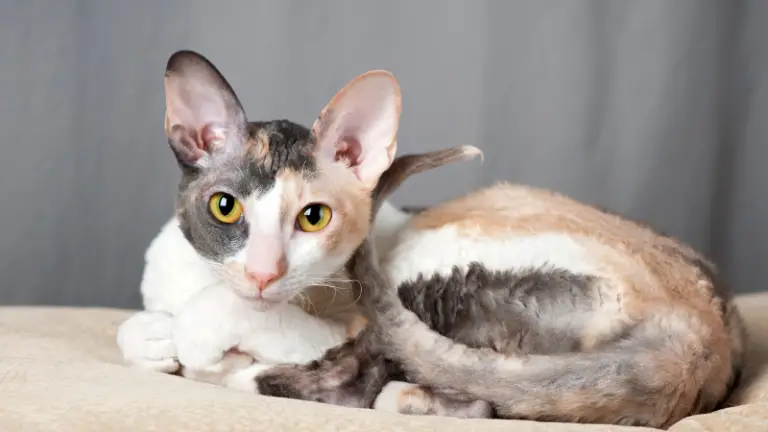BOMBAY CAT PERSONALITY AND BREED (ALL YOU NEED TO KNOW)
Would you like to know more about the Bombay cat personality? The Bombay cat is derived from the Burmese. The Bombay breed presents a wonderful shiny black cloak that contrasts with the eyes, which are copper-colored but sometimes also green.
The name refers to the well-known Indian city now renamed Mumbai. At a glance, the Bombay cat looks like a miniature panther with a coat that requires very little care, has a robust appetite, and likes the company of dogs.
Let’s find out more about the Bombay cat personality.
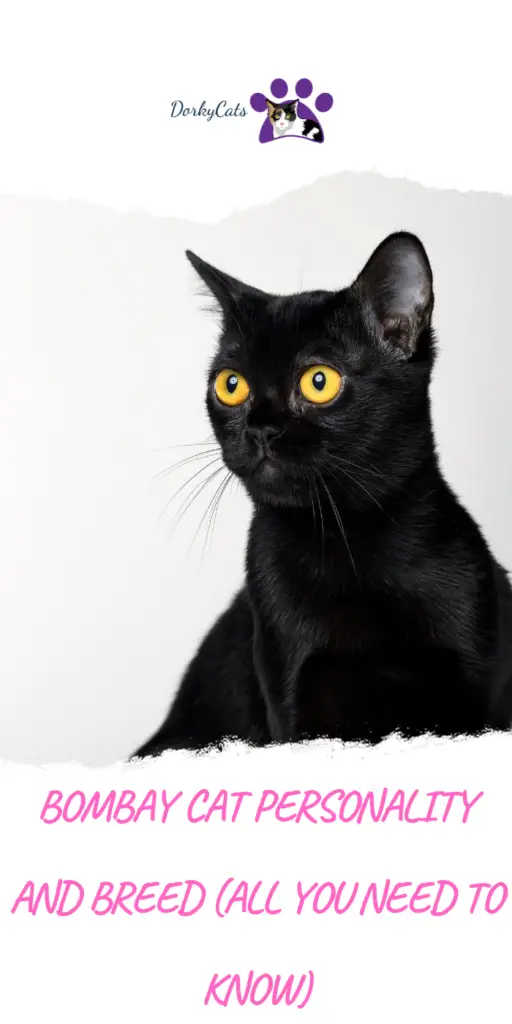
WHAT IS THE BOMBAY CAT GENERAL ASPECT AND SIZE?
Sinuous and enigmatic like a panther, the Bombay cat owes its name to its creator’s love for Kipling, a famous writer.
The Bomba cat has a round head. The muzzle is short and presents a moderate stop in between the eyes. This cat also has rounded paws. The paws are proportionate with respect to the rest body. Also, the rib cage is rounded.
CHARACTERISTICS OF THE BOMBAY CAT:
| Characteristic | Description | Notes |
|---|---|---|
| In summary | A very particular breed with a peculiar appearance. Quiet by nature | |
| Personality | Sometimes quite nervous, but with members of the family is affectionate and sociable | |
| Appearance | The coat is splendid, jet black and shiny, while the eyes are copper-colored | |
| In the house | He prefers a habitual, silent, and quiet environment | Not recommended if in the family there are noisy teenagers |
| Behavior | May be disturbed by loud noises, and when outdoors sometimes gets nervous | It’s a cat to keep in the house, especially at night and in the presence of fireworks |
| Grooming | Very simple. Stroking helps to keep the black coat shiny and promotes moulting | |
| Most common health problems | He can suffer from the protrusion of the third eyelid | Kittens can be born affected by cleft palate |
| Size | Medium, from 2 to 5 kg | |
| Ears | Of medium size, broad at the base and slightly rounded at the tip, distant and slightly bent forward | |
| Eyes | Round and distant | |
| Head | Rounded, narrow on the short muzzle, but well developed; black skin on the nose. | |
| Paws | Of medium length, proportionate to the body and with small oval feet | |
| Coat | Short, very shiny, and flattened on the body; devoid of undercoat | |
| Allowed colors | Black, completely devoid of others nuances; with bronze or yellow-gold eyes |
Remember that, in some cases, two years are necessary before the coat reveals all his extraordinary splendor. However, the coat becomes raven after about the sixth month of age.
The Bombay has a sturdier build than that of the Burmese cat.
▷ In England, it is considered a specific type of short-haired Asian.
WHAT IS THE HISTORY OF THE BOMBAY CAT?
There are currently two varieties of Bombay. The original breed was selected in 1958 in Kentucky by breeder Nikki Horner, who crossed between them the American Shorthair and Burmese, intending to get a mini black panther.
While aiming for the same purpose, Great Britain breeders followed a different path, employing a native short-haired breed. In both cases, from time to time, inside some of the litters came out some kitten with sable colored fur, irrefutable proof of the contribution of the Burmese.
Bombay’s short and silky raven coat is unique: its sheen, especially at the ends, brings out the cat’s profile.
WHAT IS THE ORIGIN OF THE BOMBAY CAT?
The Bombay is a selected breed, which started to be created at the beginning of the 50s of the last century from a breeder in Kentucky (USA), Nikki Horner.
The lady, attracted by the wild character and with the affectionate soul of the panther protagonist of the novel The Jungle Book by Rudyard Kipling, wanted to give rise to a feline breed with the same feral charm associated with a sweet character.
She tried to do it by crossing a brow Burmese with a short-haired American. After almost twenty years of continuous and accurate selections, the breeder managed to produce a splendid specimen with a shining raven coat, copper eyes so bright, and an agile and muscular body.
Mrs. Horner made up her mind at this point and decided to call the race she created Bombay in honor of the city that gave birth to the much-loved writer. In 1976, the Bombay had become a wholly defined breed that no longer had any traits of Burmese.
The Bombay was officially recognized by the CFA (Cat Fanciers’ Association). In
In Italy, this breed is still not very much known.
BOMBAY CAT PERSONALITY
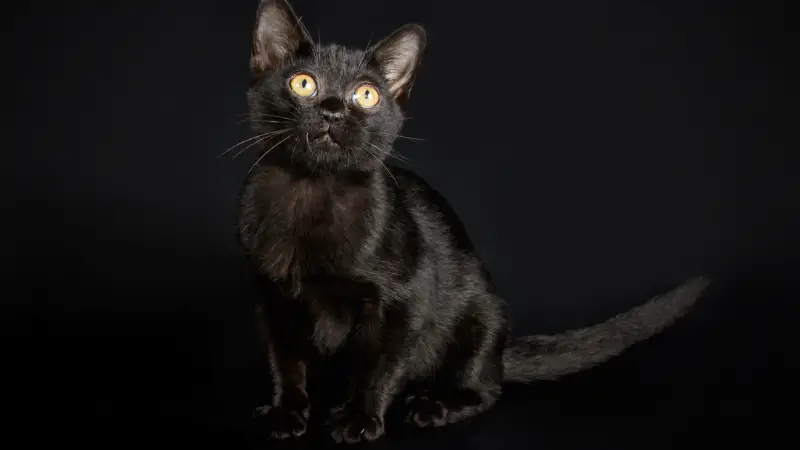
As far as the appearance of Bombay is concerned, this cat has the typical characteristics of its own breed, but it is still possible to see the Burmese and the American cat’s character traits.
A careful observer easily distinguishes those traits.
It can be said that from the first has inherited a sweet and highly affectionate character, which leads him to bond deeply with his master. But, instead, from the second, he takes a lively temperament and a great learning ability.
The Bombay is very predisposed to training, responds if called by his name, and forms a deep relationship with his master.
AN ADVICE
The affection of the Bombay is boundless, and for such reason, this cat does not need special care but needs continuous physical contact with his human. Despite its wild beast appearance, it is ideally suited to apartment living.
The Bombay cat is very fond of squatting in quiet places, preferably as close as possible to heat sources.
Another essential thing to know is that the Bombay cat does not have a very independent character. On the contrary, the Bombay cat does not love to be left a long time alone and eagerly awaits the return of his master.
In general, it is a cat of good company that is also fine with small children and knows how to live together with other animals, albeit at times it tends to be a little overbearing towards them.
TRADITIONAL OR CONTEMPORARY?
Like its Burmese ancestor, the Bombay cat has two morphological variants: traditional and contemporary the type. The first has a face and body structure that is more tapered, while the latter possesses a more rounded appearance.
Experienced breeders sometimes cross the two variants to avoid bone problems in the skull. The very first specimens from Bombay were practically black Burmese.
CARE AND FEEDING OF THE BOMBAY CAT
The short-haired coat, naturally shiny and soft, does not require a lot of grooming. Brushing him once in a while with a soft brush of horsehair and once a week a pass with a chamois cloth to keep the peculiar luster is more than enough.
The Bombay cat is not a glutton but by far prefers high-protein food with fresh meat or specific packaged foods.
The Bombay cat generally has a robust appetite, so it tends to get fat, with dangerous consequences for its slender profile and, above all, for its health. But, on the other hand, the characteristic black coat needs little care; that’s enough to brush it regularly so that it remains shiny and magnificent.
Furthermore, in appearance as in length, it remains unchanged throughout the year. For
as far as the character is concerned, this cat is usually well disposed toward dogs but does not always get along as well with other cats.
AN ADVICE
Anyone wishing to have his Bombay participate in some exposure must know that the assessment is based only on the color of the coat and eyes.
FREQUENTLY ASKED QUESTIONS
What is the Bombay cat price?
Bombay cats are pretty rare and can be costly. The price can be between $500 and $2000, depending on the breeder, the purity of the breed, and the cat’s age.
Are Bombay cats aggressive?
Bombay cats are not aggressive despite their wild appearance unless they try to defend themselves. They are generally friendly cats with humans and even other pets, especially dogs. They might have problems getting along with cats unless you get them a sweet cat willing to be dominated by the Bombay.
Are Bombay cats cat-friendly?
Bombay cats might tend not to get along with other cats unless the other cats are willing to be dominated. So if you have another dominant cat, it is possible that it will not get along with the Bombay.
Do Bombay cats have a favorite person?
Bombay cats tend to be very affectionate toward a favorite person. They develop a deep bond and follow their humans everywhere in search of attention.
Is a Bombay cat a rare cat?
Bombay cats are pretty rare; there aren’t many breeders around the world, so you might have to search for some time.
What is the lifespan of a Bombay cat?
The Bombay cat can live up to 20 years. However, good quality food, proper care, and a good environment can affect the cat’s lifespan.
How much attention does a Bombay cat need?
Bombay cats love to receive attention from their owners and do not love to stay home alone for a long time. So their coat, despite being magnificent, doesn’t require a lot of care.

